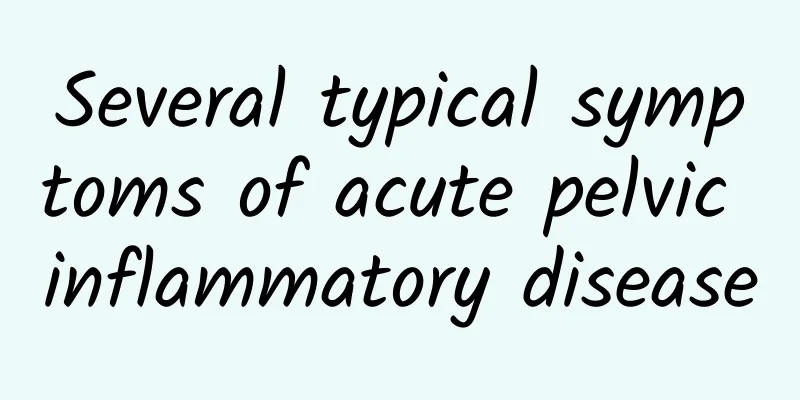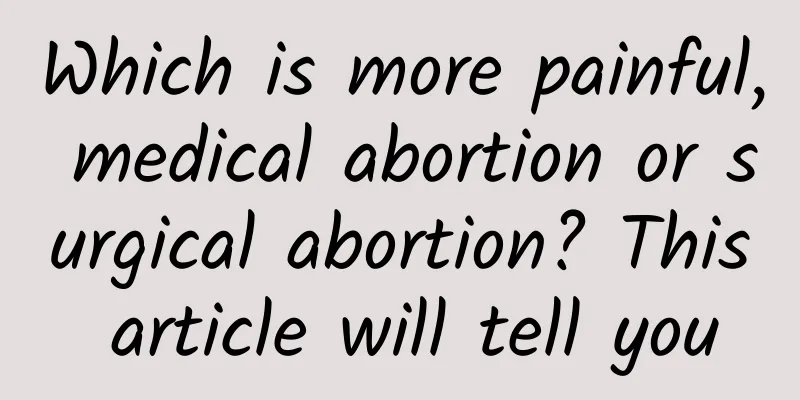How to treat acute pelvic inflammatory disease

|
How is acute pelvic inflammatory disease treated? Patients with acute pelvic inflammatory disease should take a semi-recumbent rest, eat more high-calorie, high-protein, high-vitamin loss in their daily diet, or supplement with semi-liquid food. The body needs to correct electrolyte disorders and acid-base balance, and physical cooling can be performed when necessary. For patients with mild acute pelvic inflammatory disease, antibiotics can be used for treatment. For ineffective patients, if the condition continues to worsen after observation, the body temperature rises and there are symptoms of poisoning, and the mass increases, surgical treatment should be actively performed to avoid abscess rupture; then through drug treatment, the condition has improved, but the mass has not disappeared, and it is limited. Surgical resection can also be performed to avoid late recurrence. The incidence and symptoms of acute pelvic inflammation are obvious, and patients need to go to the hospital for examination and treatment in time to prevent symptoms from worsening complications and causing greater harm to the body. Acute pelvic inflammatory disease is one of the common gynecological diseases in women. Inflammation can be limited to one or several parts. Clinically, it mainly includes acute endometritis, acute salpingitis, acute pelvic peritonitis, acute tubo-ovarian cysts, acute pelvic connective tissue inflammation, etc. Acute pelvic inflammatory disease causes lower abdominal pain and fever. If the condition is serious, there may be chills, high fever, headache, and loss of appetite. During the menstrual period, the onset may cause increased menstrual volume and prolonged menstruation. During the non-menstrual period, there may be increased leucorrhea. If acute pelvic inflammatory disease is not treated in time, it is likely to develop into diffuse peritonitis, infectious shock, and sepsis, which seriously endangers the life of women. If the acute period is not fully recovered, chronic pelvic inflammatory disease will lead to infertility, tubal pregnancy, and chronic pelvic pain, which will not only affect life, but also cause greater harm to health. The application of antibiotics should be sufficient, sufficient course, and multiple doses should be used in combination to try to completely cure acute pelvic inflammation and prevent it from turning into chronic. Usually keep the vulva clean and change underwear frequently. Menstruation and menstruation are not clean, and sexual intercourse, bathing and swimming are prohibited to prevent infection. Keep the bowels unobstructed. Drink plenty of water. High-calorie, high-protein, high-vitamin diet. Avoid spicy, fried, dry heat, and irritating products. |
<<: What can I eat if I have adenomyosis?
>>: What are the common symptoms of ovarian cysts in women?
Recommend
Brief introduction: Several common symptoms of moderate cervical erosion
Moderate cervical erosion is a serious gynecologi...
How to Care for Endometrial Thickening
The cause of endometrial thickening is relatively...
Can abdominal ultrasound detect ectopic pregnancy?
Can abdominal ultrasound detect ectopic pregnancy...
How to eat to lose weight? 4 principles to prepare a daily menu
【Principles of drawing up a daily menu】 When draw...
The hottest in summer! Red dragon fruit is low in calories and high in anthocyanins
In the hot summer, the healthy fruit "Dragon...
During the Mid-Autumn Festival, eat mooncakes and grapefruits, and be careful of the full moon! The "Round" Rescue Team teaches you tips on healthy eating
When I saw barbecue sauce advertisements starting...
How to check if there is cervical erosion
Cervical erosion can be diagnosed through gynecol...
How much does it cost to treat uterine fibroids?
Although uterine fibroids are common benign tumor...
Can I exercise during my period? Things to note during my period
Women are very weak and irritable during menstrua...
Why do women get cervicitis? You need to know these causes of cervicitis
What are the causes of female cervicitis and what...
Will uterine fluid accumulation affect pregnancy?
Does uterine effusion affect pregnancy? This is s...
Fight against the influence of gravity! Yoga cobra pose, correct forward bow posture and say goodbye to sagging breasts
Correct your hunched posture and transform your b...
What sleeping positions can relieve menstrual pain?
What sleeping positions can relieve menstrual pai...
Experts remind: Small uterine fibroids can be observed, no need to rush for surgery
Nowadays, more and more women suffer from gynecol...
Adenomyosis care issues
What are the nursing issues for adenomyosis? 1. A...









